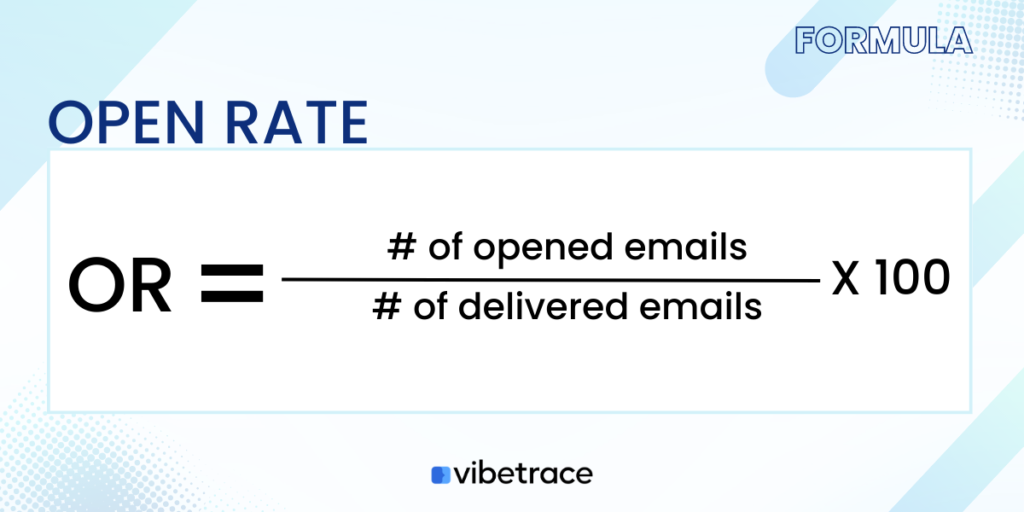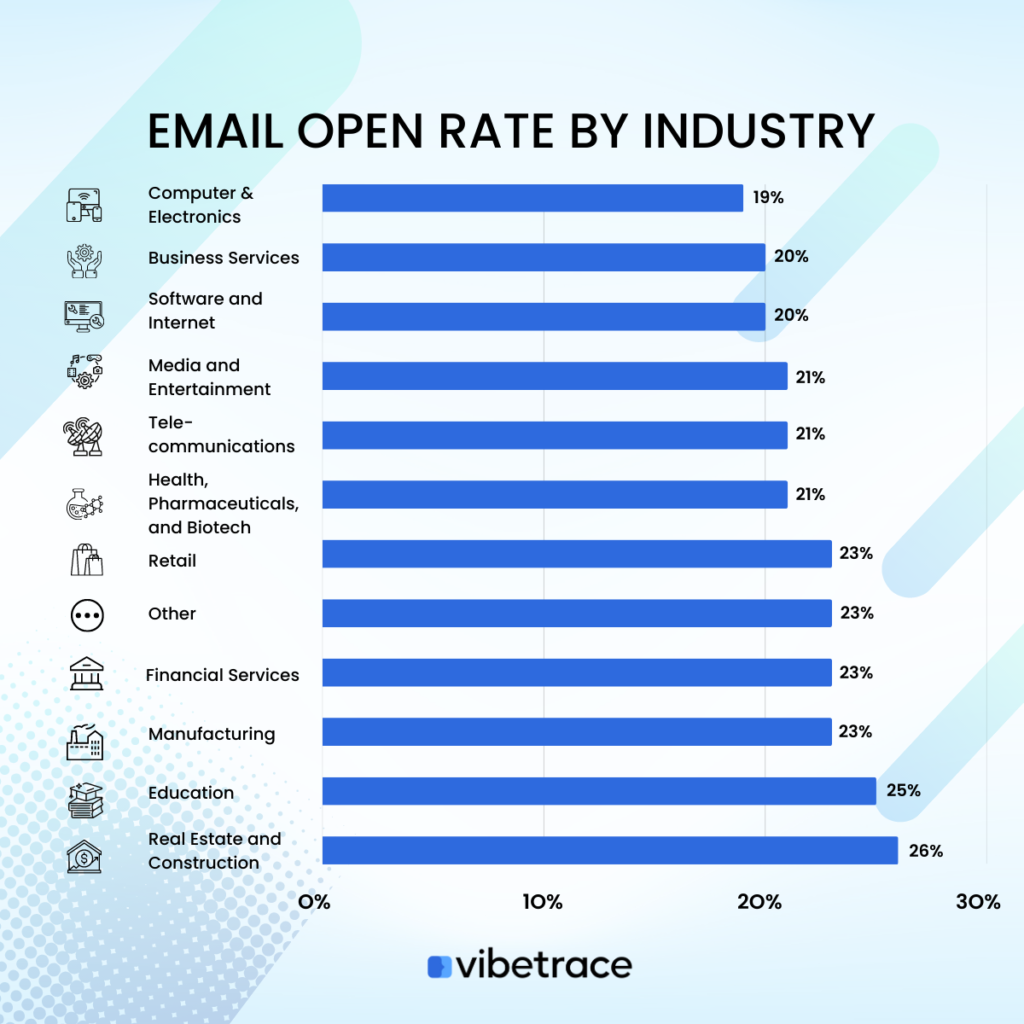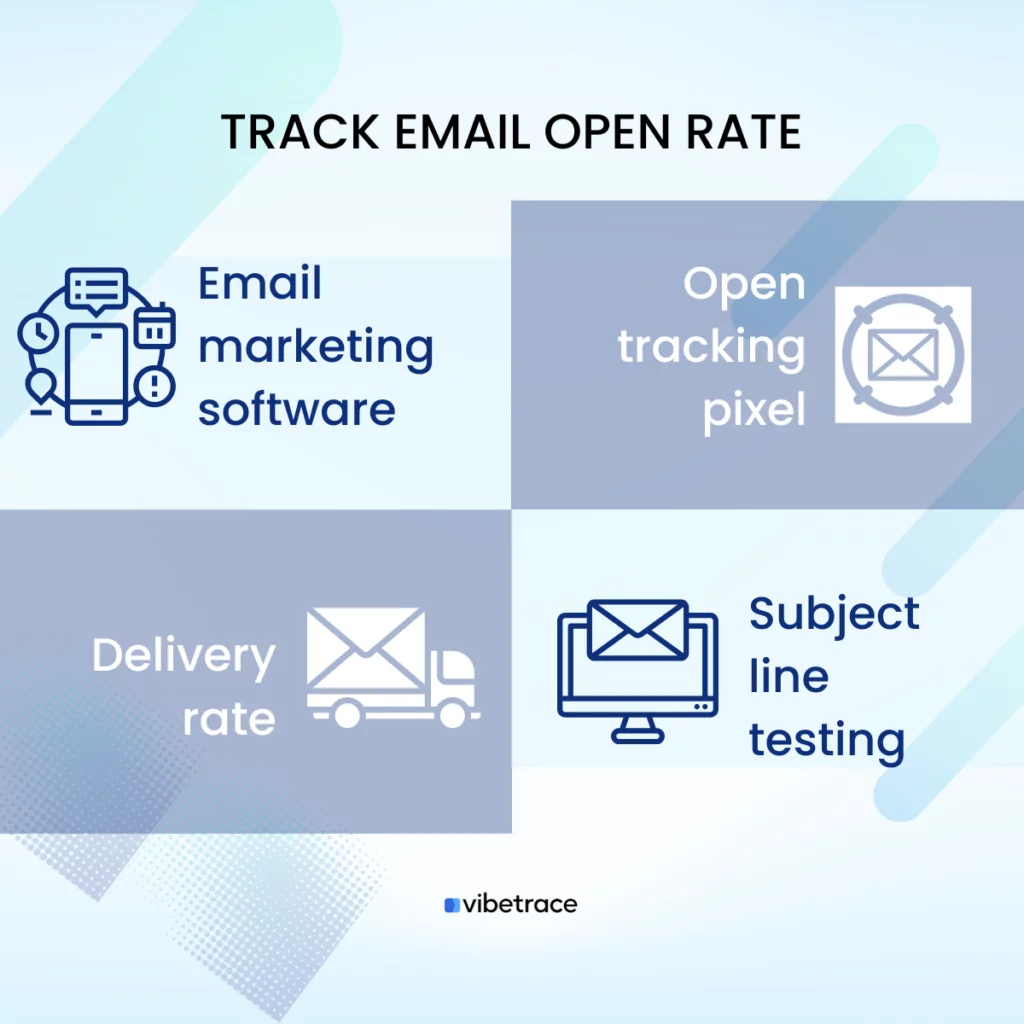The email open rate is a crucial indicator of the success of a business’s email marketing efforts.
It gives you an idea of whether your audience is looking forward to receiving your emails, which could be due to the quality of the content or the level of interest in your product or service.
Think of it, if no one opens your emails then it means that your campaigns are not effective, and your resources are being wasted.
And it’s not what you want for your business, right?
So, how do you measure the success of your email marketing campaigns?
Knowing your email open rate helps you to determine the worthiness of your email marketing so it is best to frequently monitor this rate for you to make accurate decisions that will improve your business marketing strategy.
What is Email Open Rate?
Definition of Email Open Rate
Email open rate is a metric that is expressed as a percentage and provides insight into the effectiveness of the subject line and the sender’s reputation in enticing recipients to open the email.
The email open rate can be impacted by a number of factors, leading to fluctuations in its value. It is important to evaluate the frequency of your email sends and consider whether it could be impacting the open rate.
These things can play a significant role in determining the performance of your email marketing strategy.
A high email open rate indicates that the recipients are engaged with the content and interested in the message, while a low open rate could indicate that the subject line, sender, or timing of the email was not compelling enough for recipients to open it.
Email Open Rate Formula
Tracking your email open rate provides a quantitative measure of the effectiveness of an email marketing campaign. The formula provides a clear and objective way to determine the number of email recipients who are engaging with your content.
Results can then be used to make informed decisions about future email marketing efforts, such as adjusting the timing of your sends, refining the subject line, or improving the quality of your content.

Email open rate measures the percentage of emails that were successfully delivered to subscribers’ inboxes and actually opened by the recipient.
The number of emails opened is divided by the number of emails delivered, and the result is multiplied by 100 to express the answer as a percentage.
Email Open Rate by Industry
The following shows the average percentage of recipients who open an email within a particular industry:

| INDUSTRY | AVERAGE |
| Computer & Electronics | 19% |
| Business Services | 20% |
| Software and Internet | 20% |
| Media and Entertainment | 21% |
| Telecommunications | 21% |
| Health, Pharmaceuticals, and Biotech | 21% |
| Retail | 23% |
| Other | 23% |
| Financial Services | 23% |
| Manufacturing | 23% |
| Education | 25% |
| Real Estate and Construction | 26% |
According to a study by Hubspot, the average open rate for emails across all industries is 20.94%.
The real estate and education industries have the highest open rates, at 26% and 25%, respectively. On the other hand, the computer/electronics industry has the lowest open rate at 19%.
It’s important to note that open rates can be a valuable metric when used comparatively, such as comparing the open rates of this week’s email sent to last week’s email send to the same list.
Business services, software and internet, media and entertainment, telecommunications, health, pharmaceuticals, and biotech all have an average open rate of 20-21%. Retail, other, financial services, and manufacturing all have an average open rate of 23%.
This data shows that industries can have a significant impact on email open rates, and it’s important for businesses to understand their industry’s average open rate and work towards improving it.
How to track Email Open Rate?
To track the email open rate, you’ll need to use email marketing software that provides analytics and metrics for your campaigns.

This is how to track Email Open Rate:
Email marketing software: Many email marketing software platforms such as Vibetrace include metrics for tracking open rates, such as the number of recipients that opened your email and how many times they opened it.
Open tracking pixel: An open tracking pixel is a small, unnoticeable graphic placed in an email that records when the email is accessed.
Delivery rate: The number of emails delivered divided by the total number of emails sent is the delivery rate. It’s a critical measure to monitor because low delivery rates can have an influence on your open rate.
Subject line testing: A critical step in discovering the most successful strategy to have your emails opened is to test alternative subject lines. You may learn which subject lines resonate with your audience and get the highest open rate by experimenting with different alternatives.
How often should you check Email Open Rate?
The frequency of checking email open rates can vary based on the goals and objectives of your email marketing campaign. Here are some common frequencies for checking email open rates:
Daily: For campaigns that have a high volume of email sends and require real-time insights into the performance.
Weekly: For most email marketing campaigns, checking the open rate once a week can provide a good overall understanding of performance.
Monthly: For less frequent email campaigns or for tracking long-term trends, checking the open rate on a monthly basis may be sufficient.
Ultimately, the frequency of checking email open rates will depend on the specific goals and objectives of the campaign and the volume of emails being sent. It’s important to regularly monitor open rates to identify any issues and make adjustments to improve the overall performance of your email marketing efforts.
Email Open Rate Calculator
Do you want to calculate your email open rate? Use our simple calculator below.
Simple Email Open Rate Calculator
Email Open Rate Optimization
Optimizing email open rates involves making changes to your email marketing strategy to increase the number of recipients who open your emails. Here are some ways to optimize your email open rate:
Improve the subject line: Write compelling, clear, and concise subject lines that entice recipients to open the email.
Segment your audience: Send emails to specific groups of recipients based on their interests and preferences.
Test send time: Experiment with sending emails at different times of the day to see which time results in the highest open rates.
Personalize emails: Add the recipient’s name, location, or other personal information to make the email feel more relevant and personalized.
Optimize for mobile: Ensure that your emails are optimized for viewing on mobile devices, as more and more people are reading emails on their phones.
Clean your email list: Remove inactive subscribers and ensure that your list only includes engaged and interested recipients.
By implementing these strategies, you can improve your email open rate and achieve better results from your email marketing campaigns.
Want to be up to date with Marketing?
Subscribe to our Retail CX newsletter!

Stay connected with what’s really important to optimize your digital revenues.
By clicking the button, you accept our Terms & Conditions. Also you will need to confirm your email address.
Important Things about Email Open Rate
Here are some important things to keep in mind about email open rates:
An estimate of the effectiveness of your email campaigns: Based on the number of unique opens, the email open rate estimates the number of people who opened your email. This means that it is not an exact count of the number of individuals that saw your email.
Affected by a variety of factors: Email open rates can vary widely based on a variety of factors, including the sort of email you’re sending, the subject line, the sender’s reputation, and the recipient’s email client.
Industry averages: It’s good to compare your email open rate to industry statistics to evaluate how you compare favorably against the competition.
Requires another metric that evaluates campaigns: When measuring the performance of your email marketing, the email open rate is simply one indicator that should not be overlooked. Other metrics, like as click-through rate, engagement rate, and conversion rate, can provide a more full picture of how effective your emails are.
It can change over time: Email open rates fluctuate over time and are influenced by a variety of factors, including changes in your audience, email content, and send frequency. It’s critical to keep an eye on it and adapt your strategy as needed.
Metrics related to Email Open Rate
In addition to Email Open Rate, there are several other metrics that can be considered to get a more complete understanding of a business’s performance.
Delivery Rate
The number of emails that were successfully delivered to subscribers’ inboxes, divided by the number of emails sent.
Spam Complaint Rate
The number of recipients who marked the email as spam, divided by the number of emails delivered.
Vibetrace is a software platform that provides a comprehensive email marketing solution, designed to help businesses connect with their customers and grow their sales.
The system is user-friendly and easy to use, allowing businesses to create and send personalized email campaigns to their target audience.
It also offers easy integration with any e-commerce store, which allows you to track open rates in real-time. This means that you can monitor the success of your email campaigns, understand how your customers are interacting with their emails, and make data-driven decisions to improve their results.
With Vibetrace, your business can have a powerful tool for growing your customer base, increasing sales, and driving growth.

